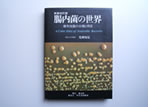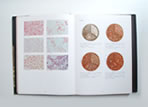|

Tomotari Mitsuoka:Early days of research(2)
Looking back in time … Research work encompassing over a half century
Study in Germany, and new developments in intestinal flora research
Between 1964 and 1966, I was able to realize my long-cherished dream of traveling to Germany to study at the Free University of Berlin in West Berlin, as a researcher at its Institute of Food Safety and Hygiene. Those two years were important for me, as I was able to meet some of the leading Western scientists in the field, and focus on conducting hands-on research at the highest level.
When I completed my study in Germany and returned to Japan, I quickly developed a device for inoculating numerous bacteria. In addition, I applied methods used in molecular biology to bacterial taxonomy, and meticulously reexamined the conventional classification and studied newly isolated bacterial strains. During the course of this endeavor, I was able to discover, name, and classify 29 new strains of bacteria that belonged to the genera of Bifidobacterium, Lactobacillus, Bacteroides, and Clostridium. |

Study abroad at the Free University of Berlin |
Around this time, I was contemplating how to progress with my research on intestinal flora, and published my theory (hypothesis) on the correlation between intestinal flora and hosts.
In addition, as there was still much confusion surrounding intestinal flora, I published a color atlas titled Chonaikin no sekai: Kenkiseikin no bunrui to dotei (The world of intestinal bacteria: Classification and identification of anaerobic bacteria), which received high acclaim globally.
 |
 |
Chonaikin no sekai: Kenkiseikin no bunrui to dotei
(The world of intestinal bacteria: Classification and identification of anaerobic bacteria), Sobunsha (1980)
|
Theory (hypothesis) on the correlation between intestinal flora and host health, 1969
Researchers gathered at the "Mitsuoka School"
Around the time when I became a chief scientist in 1970, various young researchers from universities and corporate laboratories started gathering around me, which became a phenomenon known as the “Mitsuoka School.” Each of those researchers came to me with their own research topic and eagerness to learn the effective methods of culturing and exploring intestinal flora that I had devised.
|
When basic knowledge on human intestinal flora was later obtained in terms of search methods, classification, and ecology of the microbiota, joint research projects with many clinical medicine researchers quickly ensued. There were a number of diseases that we covered, which included SMON, ulcerative colitis, colorectal cancer, breast cancer, Alzheimer’s disease, and diabetes. So we examined the intestinal flora of subjects who had those diseases and closely analyzed what was occurring.
Amid such endeavors in 1976, we conducted an experiment in which sterilized sour milk was fed to mice and found that it had the effect of increasing the population of bifidobacteria in their intestines, which proved to be also applicable to humans when they consume yogurt and the like. This would later constitute the criterion for evaluating the function of foods in the regulation of intestinal activity, under the Food for Specified Health Use (FOSHU) certification system. |

Time at RIKEN |
It has been more than a half century since I first started researching intestinal flora. Throughout all these years, I have always been fully immersed in my scholarly journey that involved inventing methods to explore intestinal flora and to inoculate and identify many different bacterial strains, discover biological patterns applicable to intestinal flora, and the functions of intestinal bacteria, and develop various functional food products. I am confident that these particular research topics will become increasingly important going forward. I also expect that there will be more interdisciplinary collaboration on the topics. As the beneficial possibilities of research in the future are infinite, I still have many research questions that I plan to solve in the remainder of my career. I invite each one of you reading this to take an interest in this exciting field of study. |

Visit to a Bulgarian village known for longevity in 1981
The photo shows a 101-year-old person. |
|